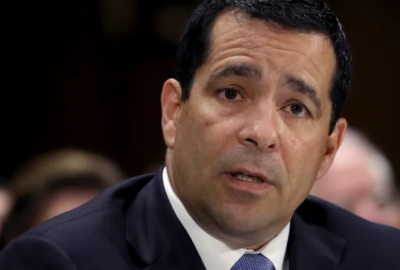Industry urges DCSA to accelerate security clearance transformation efforts
Industry and Congress say real progress has been made on the security clearance backlog, but they want to see the Defense Counterintelligence and Security Agenc...
After years of complaints with a record-high backlog and an outdated suitability, credentialing and security clearance process, industry sees agencies making steady, if not slow, progress.
The security clearance backlog is more or less eliminated, and the Defense Counterintelligence and Security Agency has a working inventory of about 200,000 cases.
DCSA is processing background investigations more quickly today than it was two-to-three years ago. In 2018, for example, the federal government completed 668,546 security clearances but finished 964,138 a year later.
The transfer of the security clearance business from the Office of Personnel Management to the Pentagon went reasonably well.
Still, industry says it struggles to fill positions and staff government contracts because of lingering concerns with an outdated and cumbersome security clearance process.
“I know that we’re going to hear a lot of problems this morning, but that’s the nature of the beast. That should not overshadow how much progress in fact we’ve made,” Gerry Connolly (D-Va.), chairman of the House Oversight and Reform Government Operations Subcommittee, said Wednesday at a roundtable with industry and DCSA. “The transition from OPM to your agency, which a lot of people were skeptical about, has worked remarkably smoothly, all things considered, especially as you said during a pandemic.”
Industry too praised the work that DCSA and OPM before it have done to tackle the security clearance backlog and complete investigations more quickly.
But government reform efforts, particularly in the industrial security space, have often been slow to materialize, and industry wants to see security clearance modernization efforts move with more speed.
The federal and industry talent pipeline, contractors told the subcommittee, depends on it.
Booz Allen Hamilton, for example, seeks new or updated security clearances for 1,600 employees a year but has 500 people waiting for approval at any given time. It also seeks reciprocity decisions for 4,400 security clearances annually.
At Northrop Grumman, 69,000 employees have security clearances, with 4,300 people waiting for approval.
Solutions are in the works, but they have been for a few years now. DCSA, the Office of the Director of National Intelligence and OPM are steadily rolling out a series of sweeping changes to the suitability, credentialing and security clearance process, an initiative called Trusted Workforce 2.0.
The long-term vision is to more seamlessly allow trusted employees and contractors to move around government — to and from different agencies, government contractors and individual projects that require security clearances.
But industry, Congress and oversight groups like the Government Accountability Office want to see government move with more speed to implement those modernization initiatives.
“The government has faced protracted delays implementing reforms in the past. I’d be interested in what perspectives industry has of the government’s ability to implement Trusted Workforce 2.0 in a timely way and how might the government accelerate implementation,” said Brian Mazanec, director of defense capabilities and management for GAO. “We’re at an important moment in the effort to improve the government’s personnel vetting process.”
Industry still frustrated with reciprocity holdups
Reciprocity — the concept of transferring trust from one individual cleared to work for a certain agency or project to another — is still a sticking point, industry said.
Agency policies on reciprocity remain ambiguous and open to interpretation, even as the Defense Department itself has made strides internally.
“All of us in industry are charged with meeting the mission and hiring personnel,” said Jennie Brackens, personnel security director for SAIC. Because of the varying implementation standards of reciprocity, we are forced to choose the candidates with the least amount of time it takes to put somebody in a seat. That affects the already very small clearance pool that we’re working with industry. Our customers are not willing to wait for processing; they want to get butts in seats so we can meet the mission.”
“The clearance pool itself is aging,” she added. “Eventually we’re not going to be able to fill the seats. We already have more positions than what we can fill right now within our company, due to that lack of personnel who have the required clearances and who can transfer easily, quickly and efficiently.”
Bill Lietzau, DCSA director, said he heard reciprocity concerns when he first joined the agency. At the time, DoD took 65-to-90 days to make a reciprocity decisions.
It took DoD six days to make those decisions last month, and today, the department is taking three days on average to issue reciprocity determinations.
“That doesn’t cover the entire U.S. government, but that is a majority of them,” Lietzau said.
Establishing an end-to-end background investigation case management and adjudication system will help industry’s reciprocity concerns, he added.
DCSA is developing the National Background Investigations Service (NBIS), and the agency rebaselined the project and set new requirements last year to better conform with security clearance modernization initiatives.
“Over the long term what we are going to see with NBIS, as we begin to roll the system out and we onboard federal agencies across the whole of government, is that timeline is going to shrink,” Marianna Martineau, assistant director for adjudications at DCSA, said of the time it takes to grant reciprocity decisions. We won’t be moving a security clearance from one system to another system for accessibility. That security clearance will already be in the system. So if the Department of Justice or Treasury grants a security clearance the data is in the system, the information and the background investigation is in the system, so when that person needs to move to a DoD clearance as an example, the information is already there.”
Agencies, however, will have to opt into NBIS. Using it isn’t a requirement.
Martineau believes agencies will sign up to use the platform, and processing security clearances and granting reciprocity decisions will get easier.
Lietzau said DCSA recently met its last four milestones for the NBIS project, and the department hopes the new service will provide continuous vetting and evaluation capabilities as envisioned under the Trusted Workforce 2.0 initiative by 2023.
GAO, however, has its concerns with the long-term plan for NBIS. DCSA is using an integrated master schedule to plan NBIS, said Mazanec.
“We assessed a June 2020 version of the program schedule — this was right after the program was rebaselined — and found that it was not reliable,” he said. We think that this may affect the ability of DCSA to deliver NBIS on schedule as needed.”
Copyright © 2024 Federal News Network. All rights reserved. This website is not intended for users located within the European Economic Area.
Nicole Ogrysko is a reporter for Federal News Network focusing on the federal workforce and federal pay and benefits.
Follow @nogryskoWFED
Related Stories






